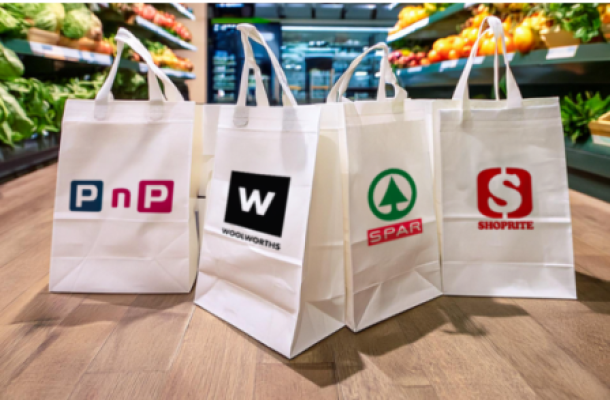Promotions whip SA’s price sensitive-consumers into a shopping frenzy
The recent chaotic scenes of frantic shoppers taking advantage of the promotions on the opening day of The Mall of Africa in Midrand, Gauteng was proof that despite the fact that South Africa may be on the brink of recession, local shoppers retain their appetite for promotions and special offers.
Promotions whip SA’s price sensitive-consumers into a shopping frenzy
This is borne out in the annual Nielsen study of South African Shopper Trends 2015/2016 which found that promotion-seeking behaviour amongst South African shoppers is high, with consumers actively looking for these types of offers within their repertoire of grocery retailers.
In terms of their sensitivity to promotions, the highest number (36%) said they seldom change stores but actively search for promotions when shopping, while the second highest number (22%) regularly buys different brands because of promotions.
The strength of the study lies in the fact that it has been carefully balanced to be representative of income, age and gender across South Africa and is drawn from a highly robust, national sample of 2 524 main grocery buyers and influencers and is based on in-depth, face to face interviews. Out of the main shoppers interviewed, 68% were women and 32% men and of the influencers, 64% were men and 36% women.
“Consumers have always been price conscious but have now become even more so within their choice of stores. Consumers actively search across media platforms like broadsheets and investigate retailer websites for promotions. Given that consumers are pursuing this form of research there is definitely a big gap in the market for the provision of more information via mobile channels,” says Nielsen consumer insights director Esti Prinsloo.
Price awareness remains high
Against the backdrop of extremely tight economic conditions, the study found that consumers are exhibiting even more price-conscious behaviour and are likely to notice any price fluctuations amongst categories they buy regularly.
Evidence of this is the fact that the majority (48%) of shoppers said they know the prices of most of the items and always notices price changes. This is up from 39% in 2014. In addition, a whopping 88% of consumers feel that food prices in South Africa are increasing, 11% feel they are stable and only 1% that they are decreasing.
In terms of how consumers are responding to rising food prices, the majority of respondents (54%) said they now buy only essentials and have cut down on luxuries; 36% said they buy in bulk to get lower prices and 30% said they buy less in total. The same figure said they have switched to cheaper brands; 29% said they buy products on discounted price and 8% seems to be living comfortably as they do not see rising prices as affecting them.
Overall, spend on food, groceries, household and personal care items has increased by 6% in the last year from R1 610 in 2014 to R1 702 in 2015. With specific reference to their share of monthly spend on fresh food i.e. meat, fish and vegetables, this figure stayed roughly the same - R639 in 2014 and R640 in 2015, but this is set to change in 2016 as the effect of the drought impacts the availability of fresh food products.
Consumers make a plan
The study also clearly shows that grocery purchases are planned activities, with the highest number of respondents (81%) saying they usually plan what they want to buy before they shop for groceries, while 76% often purchase items that they notice are on sale or promotion while in-store. 73% say they buy named brands because they trust them and 72% have regular shopping routines and buy most products out of habit. 71% say they have a strict household budget for household groceries and only buy the grocery items that they need.
Back to basics
To provide strategies on the path forward, a key focus area of the study concerned the shopping habits of consumers and therefore saw the inclusion of the question “which type of stores have you visited in the past seven days?”. The results showed that despite supermarkets showing a 9% decline from 92% in 2014 to 83% in 2015; they remain the most popular retail channel in South Africa. Spaza shops maintained their usage at 45% in 2015.
It’s important to note, however, that the results for how often consumers shop on average per month, at the same selection of stores, are markedly different. Supermarkets have seen a decrease in shopper-frequency levels from 4,5 times per month in 2014 to 4,3 times in 2015. Spazas, however, have risen from 18,2 times per month to 18,4 as have butchers (2,7 to 3,2) and vegetable vendors (4,3 to 5,3).
“The increased use of more local stores points to a trend towards the ‘neighbourgoods’ type approach to retail connections. It may well be that this is related to the ability of these outlets to offer a far more flexible shopper experience and therefore better meet the needs of shoppers in light of the challenge of ever-tightening budgets.
“Their location also means they are in far closer proximity to consumers which can lead to welcome fuel savings. In contrast, visits to Hypermarkets declined from 2,8 to 2 per month. “These outlets have always been more destination orientated and for shoppers at these stores, promotions and price are big drivers. Significant promotions are therefore required to entice consumers to travel to purchase in bulk quantities,” comments Prinsloo.
Online’s strength is information
Looking at the digital retail realm, the study revealed that 7% of South African shoppers have visited a retailer website in the last month, the same figure as in 2014. The interesting finding is that consumers mainly use websites for information rather than shopping. In terms of their purpose for visiting a retailers’ website, 63% of respondents check out special offers, 31% to look up product information, 29% look up recipes, tips and ideas, 20% respond to a retailer event or competition and 19% buy groceries online. In addition, 18% read product reviews, 16% sign up for a loyalty card and 10% check on their loyalty status.
Looking ahead
As a result of the data gathered during Nielsen’s Shopper Trends Study the following points should be considered:
Expect to see shifts between premium, mainstream, and economy brands as consumers are forced to consider cheaper options.
Consumers will forego larger pack sizes and move to smaller options to maintain their product choice.
Consumers are further likely to shift between branded products and retailer private-lable offerings if private-lable offerings are seen as the cheaper alternative with similar or better quality perceptions.
Grocery e-commerce is still small, however shoppers, especially the upper income and digital decision makers, recognise the deal-seeking and convenience aspects. Retailers will need to overcome the main barriers of quality/accuracy, in-person experience and fulfilment to drive scale and growth.
Loyalty programmes with benefits that result in cheaper products are gaining in popularity and in return. Retailers offering these are reaping the benefits. In the shoppers’ quest for better deals, loyalty cards are seen as a way to get the best for their buck.
In the current economic climate, the shopper is constantly challenged to trade-off between available budget and what they need to provide for themselves and their families. Their assessment of essentials vs “nice-to-haves” is increasingly critical as it drives their decisions to exclude certain products from their basket to stay within budget.
In light of this consumers are enticed by price and promotion and are willing to go the extra mile to get the better deal. However, quality remains significant and brands that continue to delight their customers will reap the benefit of being chosen, thus the value proposition will always remain more than just the actual price.
News Category
- International retailers
- On the move
- Awards and achievements
- Legislation
- Wine and liquor
- Africa
- Going green
- Supplier news
- Research tools
- Retailer trading results
- Supply chain
- Innovation and technology
- Economic factors
- Crime and security
- Store Openings
- Marketing and Promotions
- Social Responsibility
- Brand Press Office
Related Articles

Clear winner in South African retail battle

Drinks survey reveals Rooibos as a top choice a...

Consumers pay more at till for chicken, but far...

More Pick n Pay smart shoppers switching points...


